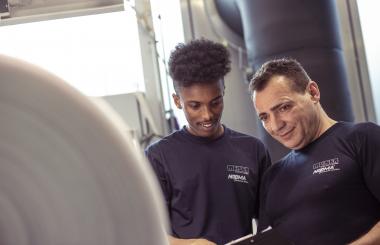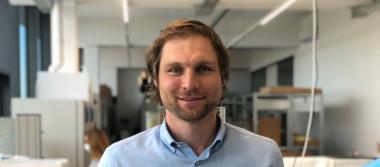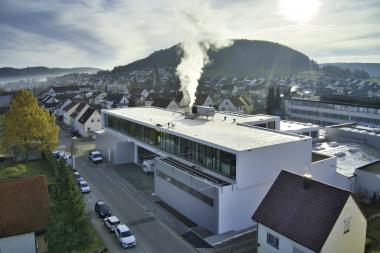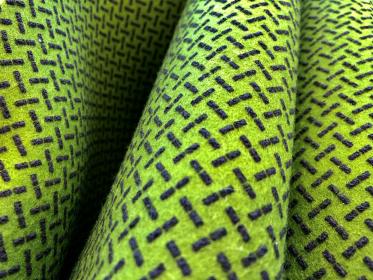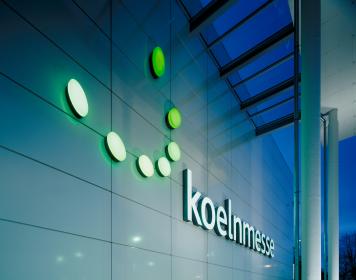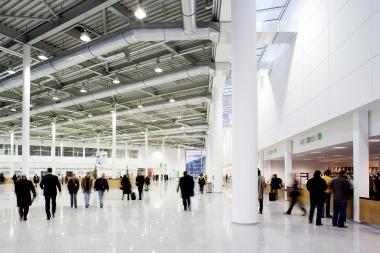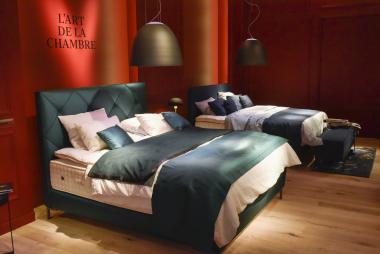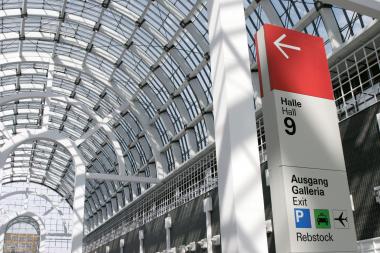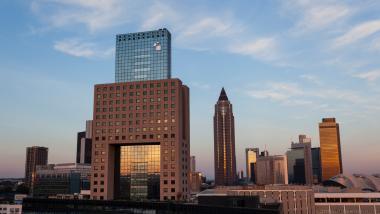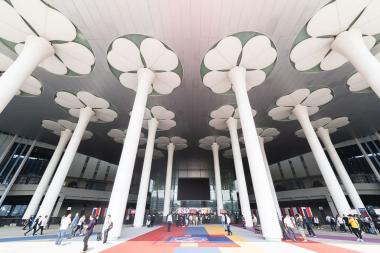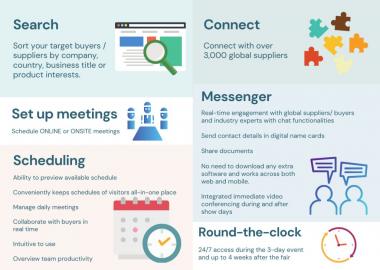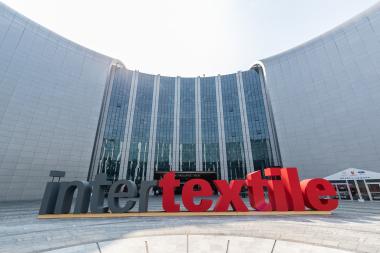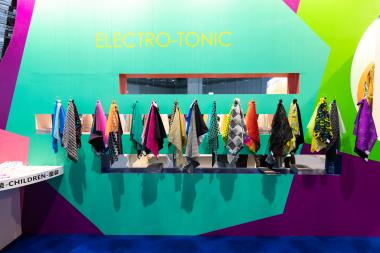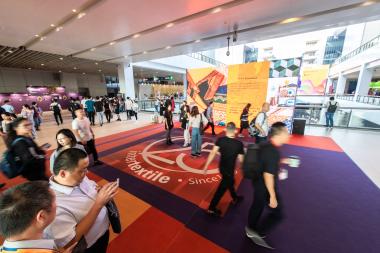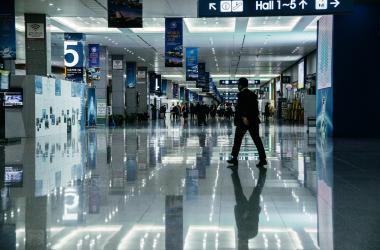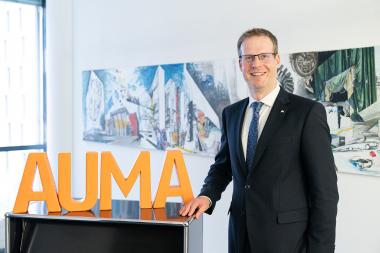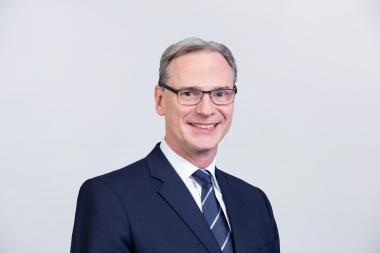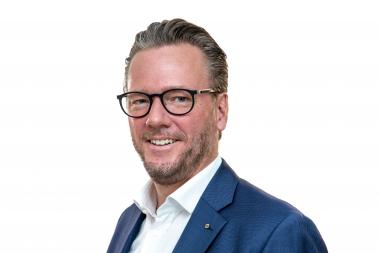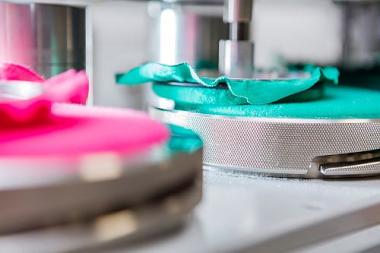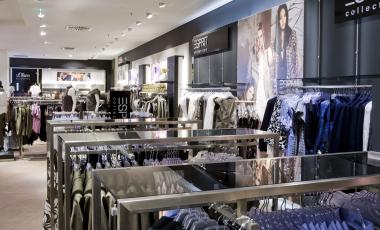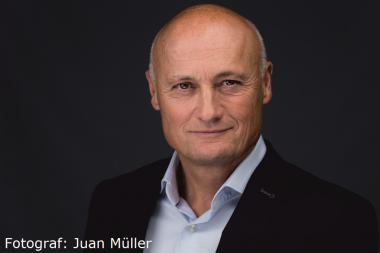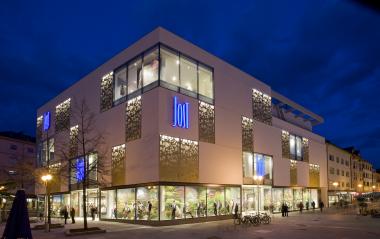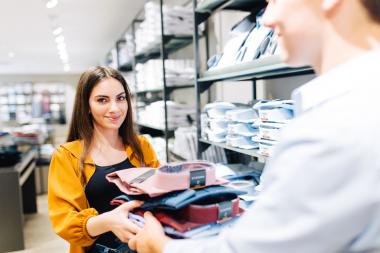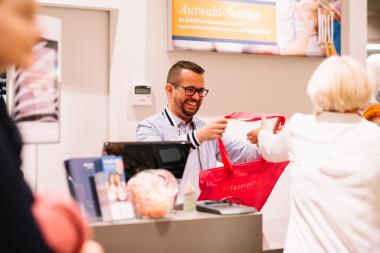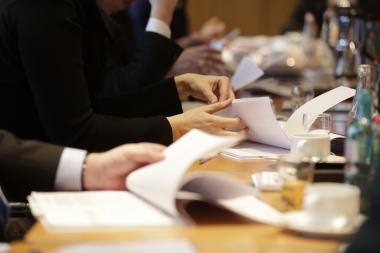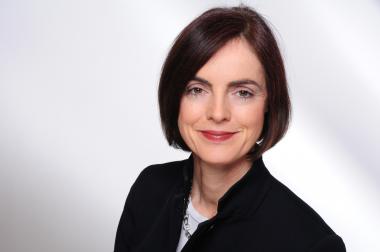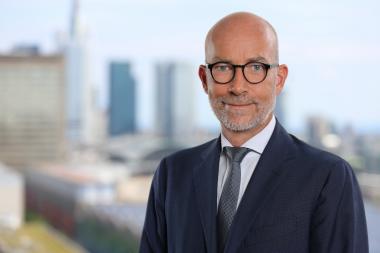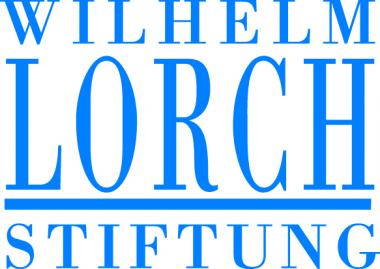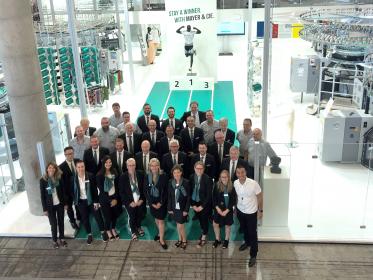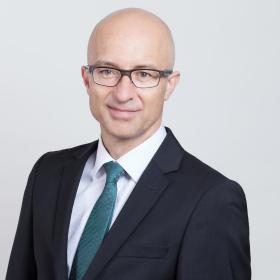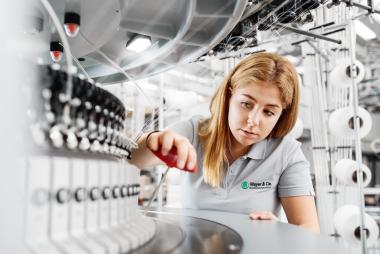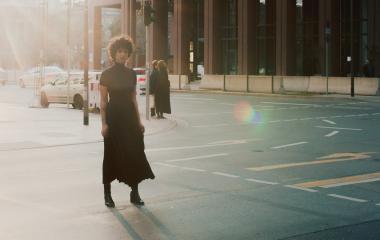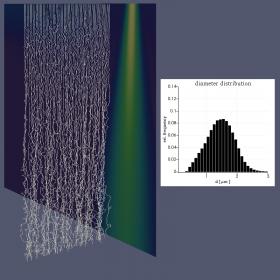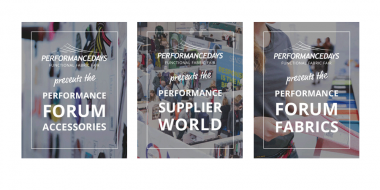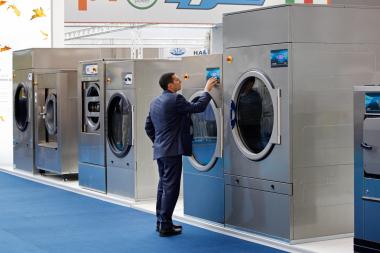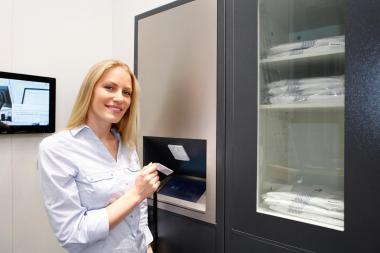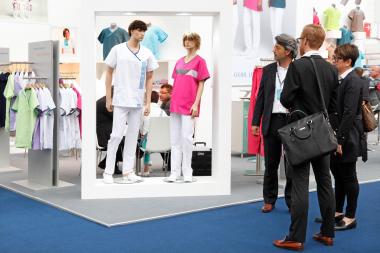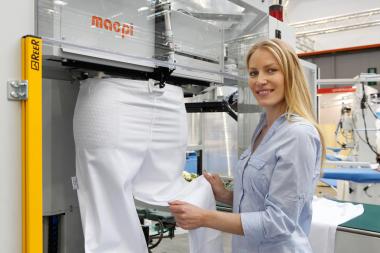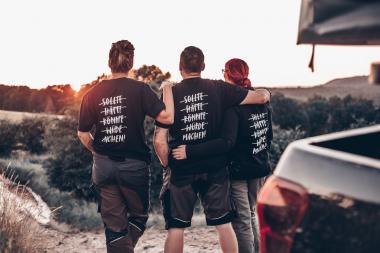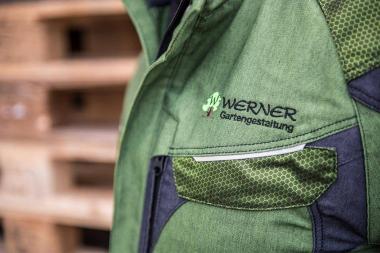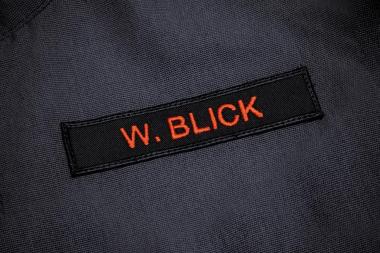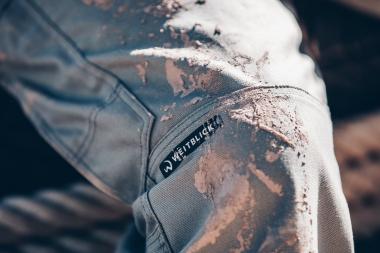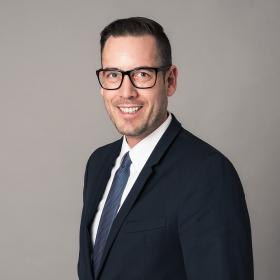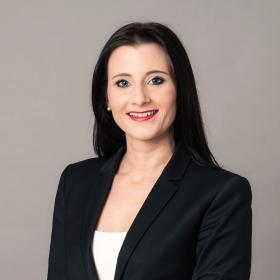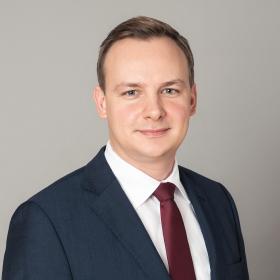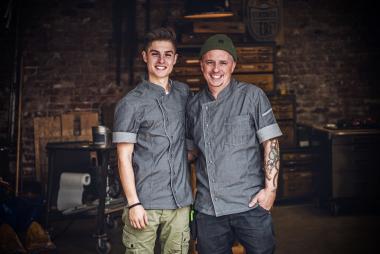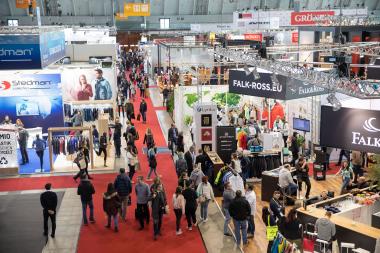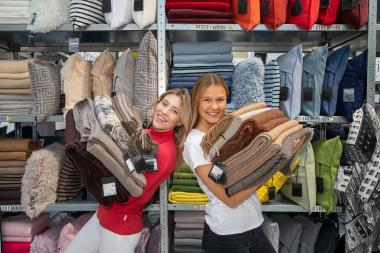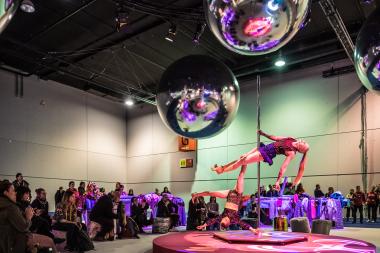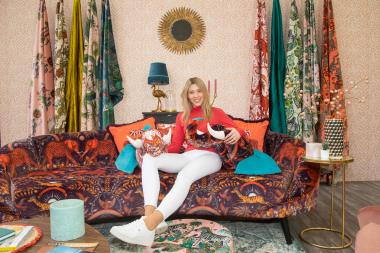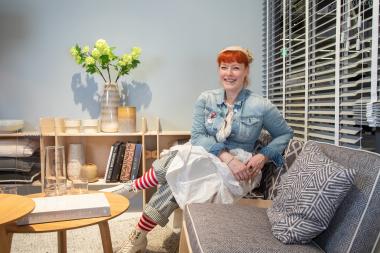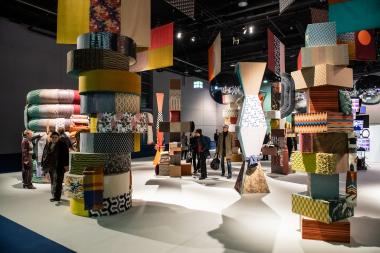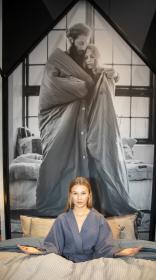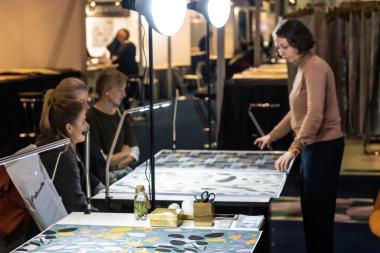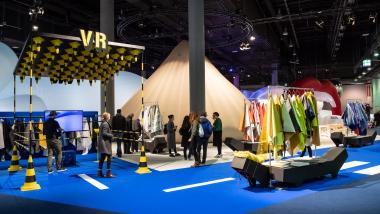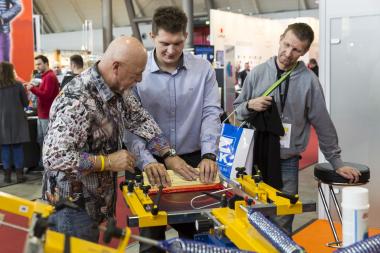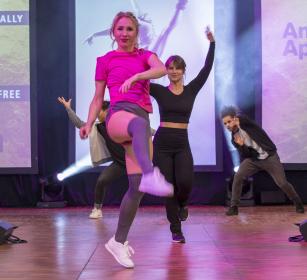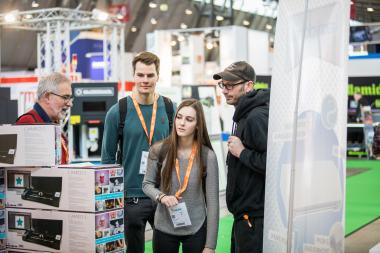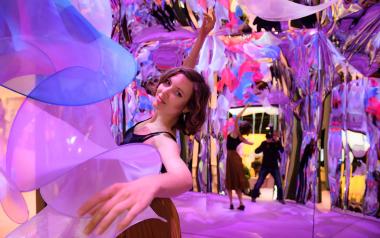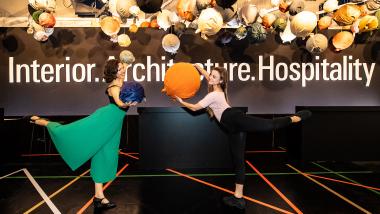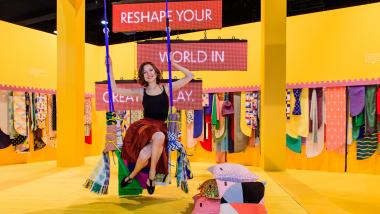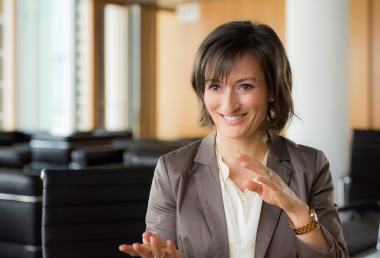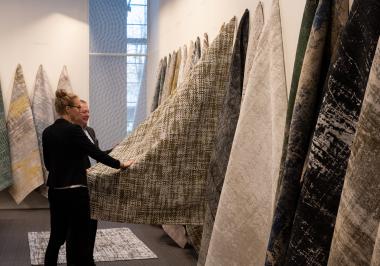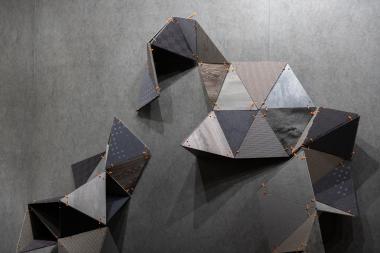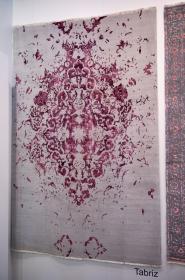Nopma - Experts for antimicrobial finishing: Technical textile coatings from the Swabian Alb
The Carl Meiser GmbH & Co. KG - started in the early 1950s as a day- and nightwear manufacturer. Over the last 20 years the company has become a specialist in the field of technical textiles. With its brand nopma Technical Textiles the company is present as developer and producer of textile solutions via coatings. The main products are nopma anti-slip - textiles with anti-slip effect, nopma adhesion - adhesive pre-coated films, spacer fabrics and substrates for lamination in automotive interiors, nopma ceramics - abrasive more resistant textile surfaces and nopma silicones - silicone coatings on textile surfaces.
Textination talked to the managing director, Jens Meiser, who joined the company in 2005, realigned the division and developed it into a service provider, about his plans and objectives.
Founded in 1952, Carl Meiser GmbH & Co.KG has changed from a day- and nightwear manufacturer to an innovator in the field of technical textiles, presenting themselves as a specialist for plastic-based coating processes. If you had to introduce yourself in 100 words to someone who does not know the company: What has influenced you most in this development process and what makes you unique?
Innovation is the new normal - This has been true for the textile industry not just since Sars CoV-2. Our industry was one of the first to be disrupted in the early 1990s and has always been subject to constant change. This urge for further development, which is essential for survival, has left its mark on us intensively and has enabled us to manage huge leaps in innovation in recent years
Today we regard ourselves as an innovative development and production service provider with a focus on textile coating. We develop and produce almost exclusively customized special solutions.
Through the combination of coatings on textiles these hybrid materials receive completely new properties.
You manufacture exclusively at your location in Germany. Why? Have you never been tempted to set up subsidiaries in other countries, for example to benefit from lower wage levels?
Today we supply global supply chains from our headquarter in southern Germany. Although we produce in a high-wage country, much more important for us are know-how and the drive of our team to create something new. Globalization will continue to be the key to success in the future. Therefore, subsidiaries in North America and Asia could be very interesting for us in the medium- and long-term perspective. However, this is still too early for us.
You use CIP and Kaizen techniques intensively in your company. How did a Japanese concept come about in the Swabian Alb?
KAIZEN, the change for the better, are actually German virtues. The urge to improve and optimize things is in all of us. Due to the continuous improvement process we do not stand still but evolve constantly. Besides, there is the personal affinity to Japan. A look at another culture simply opens the horizon. And if you additionally recognize parallels in the working methods, it’s even better.
10 years ago, you turned your attention to new markets: aviation, automotive, protection, caravan and furniture manufacturing, to name just a few. Some of these segments have collapsed significantly during the Covid 19 pandemic. What market development do you expect in the medium term and what consequences will this have for your company?
Of course, the aviation or automotive industry, for example, have substantial problems during or due to the Covid-19 pandemic. Quite honestly, many of these problems existed before. They were further tightened, as if a fire accelerator has been used. Of course, these cut-backs are also hitting us hard economically. But we are pursuing long-term goals. As a medium-sized company, you have to have the resilience to continue on your path. Thanks to our specialisation and the split of our industrial sectors, which we drive forward every day, we manage to decouple ourselves more and more from economic developments in individual industries. For our customers this is a great advantage of relying on a very stable partner with long-term orientation.
We are positive about the future. Megatrends like sustainability, digitization and ongoing globalization will lead to new business models in the above-mentioned sectors, as in many others, and to renewed growth. Our coatings on textiles and flexible woven materials can contribute a wide range of solutions to this. If, for example, materials become lighter with identical usage properties or suddenly become biodegradable, because of biodegradable plastics, many new opportunities will arise.
Tailor-made instead of solutions for major customers: The topic of individualization down to batch size 1 is making up a large part of the discussion today. In 2015, you opened a large development laboratory where you have a wide range of testing technologies for textiles and plastics available. What do you think about individual product solutions, and in which application areas have you successfully implemented them?
In principle, we do not use any standards. We live individualization with the smallest possible batch sizes. In our field, we do not manage batch size 1, but we start with MOQs of 300 running meters at process-safe series production. We have very few finished products, and above all we have no collections. Our development laboratory is the key for this. Together with our customers we have the possibilities to realize very lean development processes.
Even on a laboratory scale, we can develop and test new products within just a few hours. We then strive to scale up to production at a very early stage in order to obtain production series results. This way, we offer our clients speed and power that represent a special potential for our partners.
You register important input factors in the production process and evaluate them in monthly environmental analyses. What are these factors in concrete terms and to what extent have their analyses already changed production operations? How do you define environmental management for your company?
For us, environmental management means a holistic approach. In principle, we operate production units and manufacture products that consume many resources. Due to the high production volumes, this continues to accumulate. Because of this, it is self-understanding that we record and evaluate our input and output flows and derive measures from them. This makes economic sense, but is also necessary because of our responsibility for our environment. Specifically, these are energy consumption values, consumption data of primary chemicals, electricity load peaks, our Co2 footprint, just to name a few. This consideration has changed us in many areas. Today we operate a power plant with gas condensing technology, our free roof areas are greened or carry photovoltaic modules, we offer our employees and visitors electric filling stations and finally we have converted the entire power supply of our factory to environmentally friendly hydroelectric power.
With nopma, you have been building up a brand for the technical textiles industry since several years and communicate this via an Individual website parallel to Carl Meiser GmbH & Co. KG. How did this brand name come about and what is the product portfolio behind it?
This is the name of a first technical textile product from the 1990s. It was a textile - coated with dots. Dots on a knitted fabric. NOPMA. My father created this brand.
In 2016 you invested in an additional production line for nopma products and were able to start a directly serial delivery in the NAFTA area. How do you currently assess the market opportunities for North America and Mexico?
We continue to see opportunities in globalization and thus on the North American market also. However, these markets are still severely affected by the pandemic and there are major distortions. When these return to normal, we surely will see more success on these markets again.
As an innovation leader, Meiser offers solvent-free PU adhesive systems as pre-coatings for lamination. How do you assess the importance of such innovations in the context of REACH?
These innovations offer our customers the opportunity to decouple themselves from the pressure REACH triggers in some industries. However, we also have some products that have been developed newly in recent months. This keeps us busy, but also creates opportunities to open up new market segments.
How have you felt about the corona era to date - as a company and personally? What would you on no account want to go through again and what might you even consider maintaining on a daily basis?
I think this time has also strengthened us as a society, as people and even as entrepreneurs. Each crisis you go through makes you a little more relaxed for the unforeseen, but also more motivated to achieve your goals. In my opinion, there have been a lot of positive things in the last few months. Suddenly, for example, digitalization tools have become accepted in our everyday lives, and I feel that people are paying more attention to others again. Hopefully this will stay this way.
The futuristic "tube" escalator at the Elbphilharmonie Concert Hall is just as impressive as the building itself and the longest escalator in western Europe. In August, a start-up based in Cologne installed an UV technology that keeps the handrails clean at all times. At the same time, you presented an antiviral functional coating that can be applied to all textiles in the form of yard goods. How does this work and for what purposes will this technology be suitable?
We have already been working with antimicrobial finishing techniques for many years. This already started with the swine flu in 2009/2010, when we made initial contacts with a young start-up and launched a development. Due to a lack of market interest, however, this had to be discontinued after a few months. Today we are experts in the field of "antimicrobial equipment by means of coatings". We were also able to build up an enormous amount of knowledge on the subject of approval and biocide regulation. Today, we can support our customers holistically in these areas. The function by skin-compatible active substances from the cosmetics sector with a vesicle booster can kill viruses and bacteria within a few minutes.
Since the pandemic has shown us the enormous importance of a new level of hygiene, the applications are very diverse and differentiated. We have already realized the use in personal protective equipment, work furniture, vehicles and for example gloves. In principle, every application is predestined where textile carriers are exposed to many touches by different persons in high frequency. Here our nopma products offer a new level of protection and hygiene.
To break new ground means decisiveness, overcoming fears - and thus the courage to fail. Not every project can succeed. In retrospect - about which entrepreneurial decision are you particularly glad to have made it?
We fail again and again. This is part of the game. But it has never happened that we did not learn anything. The pandemic situation is another good example. In spring we accepted our corporate responsibility for our society and were one of two companies in Baden-Württemberg to achieve certification for FFP protective masks. Since we did not want to participate in the revolver market at that time, we offered these products only to the public sector at favourable pre-crisis prices. However, the decision makers could not make up their minds for weeks and did not order. This disappointed our whole team very much at that time. Today we have overcome this and have taken a lot of knowledge with us from this development.
The interview was conducted by Ines Chucholowius, CEO Textination GmbH


